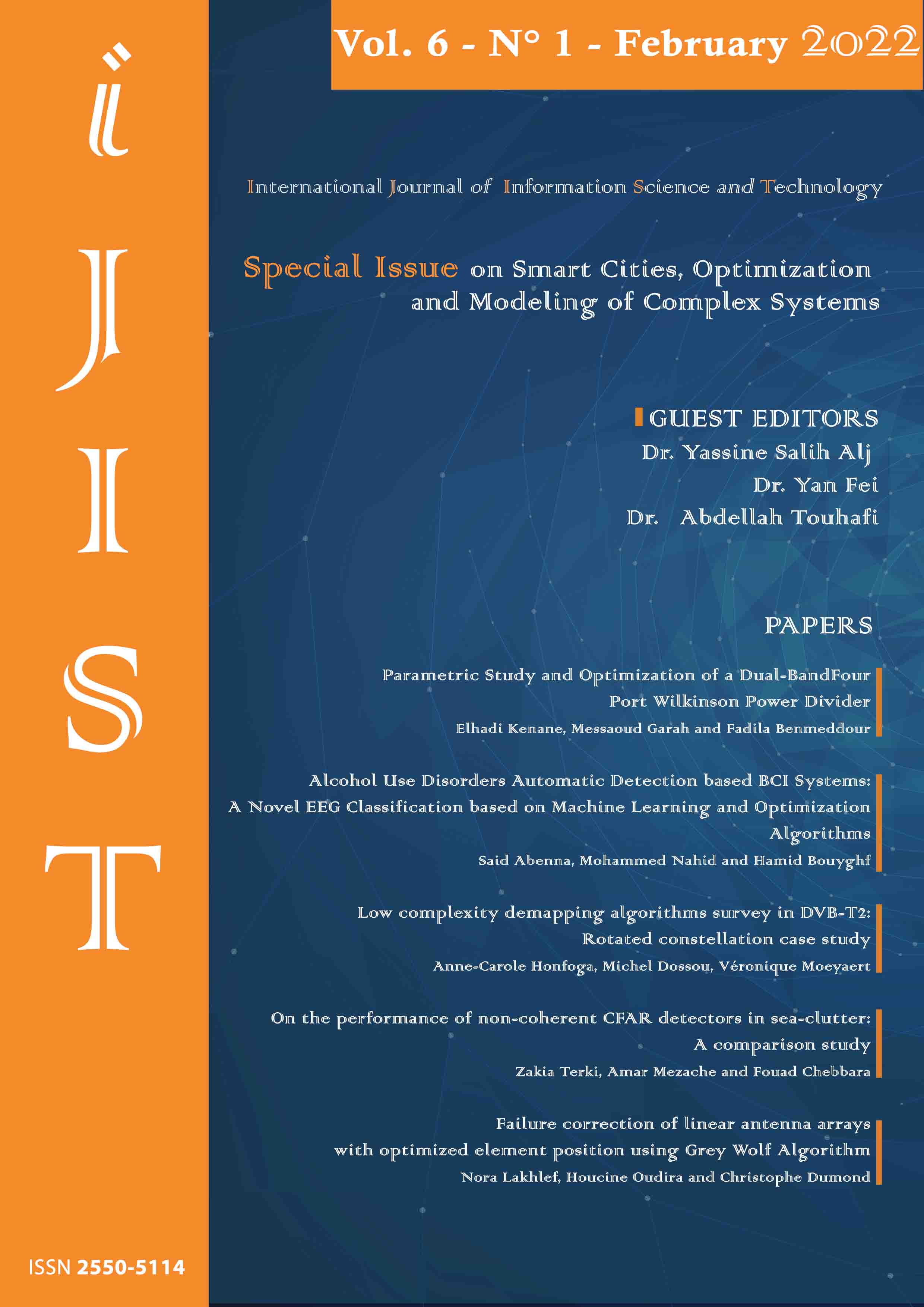Failure correction of linear antenna arrays with optimized element position using Grey Wolf Algorithm
Abstract
The paper concerns the problem of monitoring linear antenna arrays using grey wolf optimization method (GWO). When an abnormal event (fault) affects an array of antenna elements, the radiation pattern changes and significant deviation from the desired design pattern can occur. In this paper, reconfiguration of the amplitude and phase distribution of the remaining working elements in a failed array is considered. This latter can improve the side lobe levels (SLL) and also maintain the null position. The main purpose of using the GWO technique is its ease of implementation and a high performance computational technique. To assess the strength of this new scheme, several case studies involving different types of faults were performed. Simulation results clearly have shown the effectiveness of the proposed algorithm to monitor the failure correction of linear antenna arrays.The submitting author warrants that the submission is original and that she/he is the author of the submission together with the named co-authors; to the extend the submission incorporates text passages, figures, data or other material from the work of others, the submitting author has obtained any necessary permission.
Articles in this journal are published under the Creative Commons Attribution Licence (CC-BY). This is to get more legal certainty about what readers can do with published articles, and thus a wider dissemination and archiving, which in turn makes publishing with this journal more valuable for you, the authors.
In order for iJIST to publish and disseminate research articles, we need publishing rights. This is determined by a publishing agreement between the author and iJIST.
By submitting an article the author grants to this journal the non-exclusive right to publish it. The author retains the copyright and the publishing rights for his article without any restrictions.
Privacy Statement
The names and email addresses entered in this journal site will be used exclusively for the stated purposes of this journal and will not be made available for any other purpose or to any other party.







